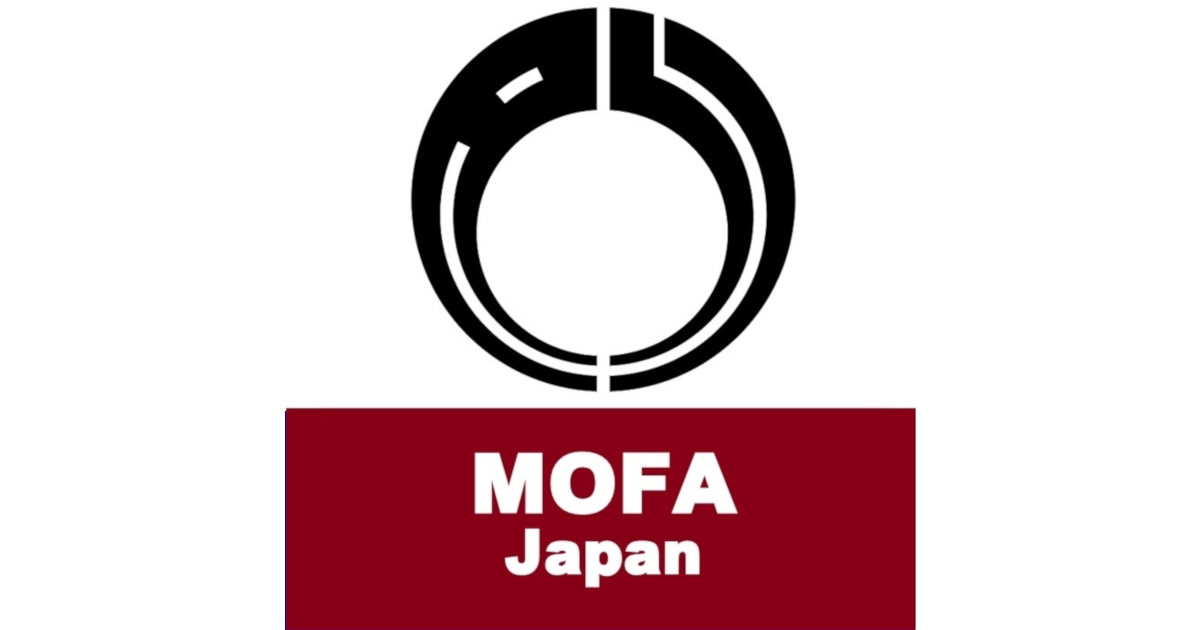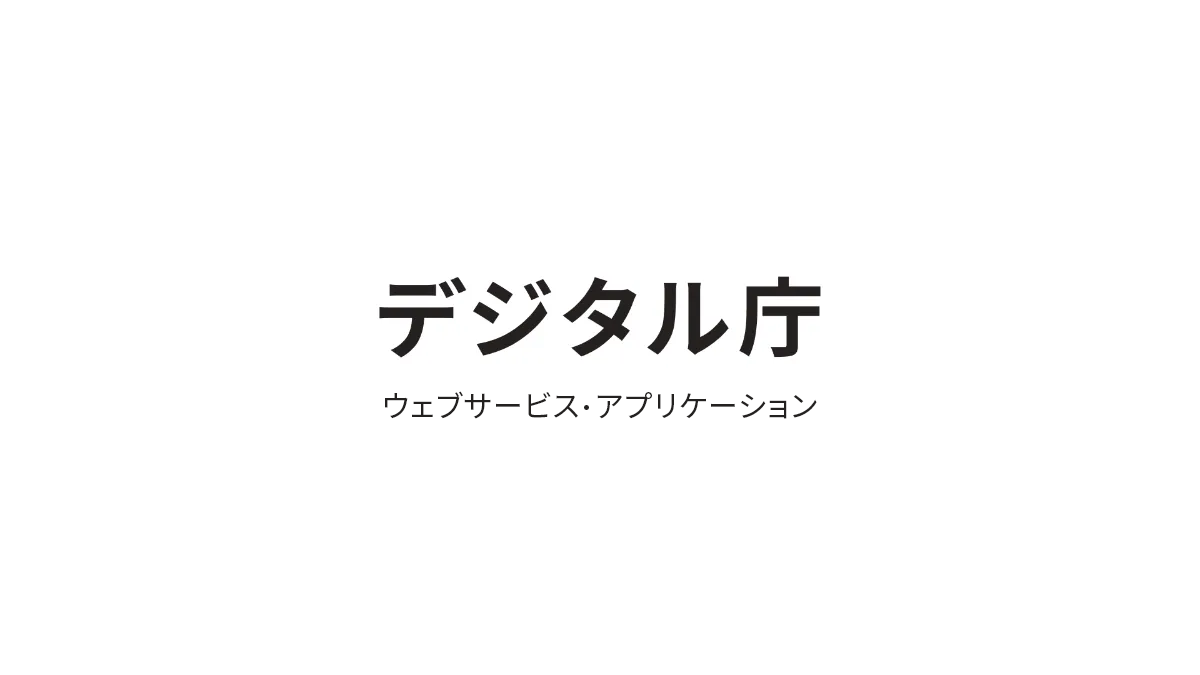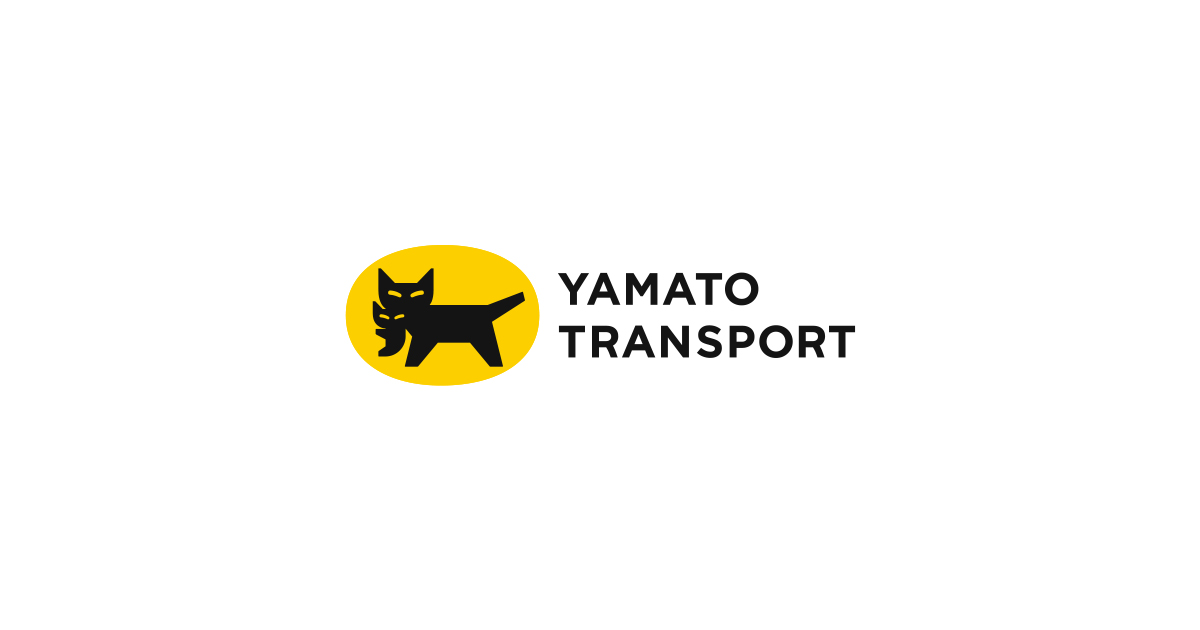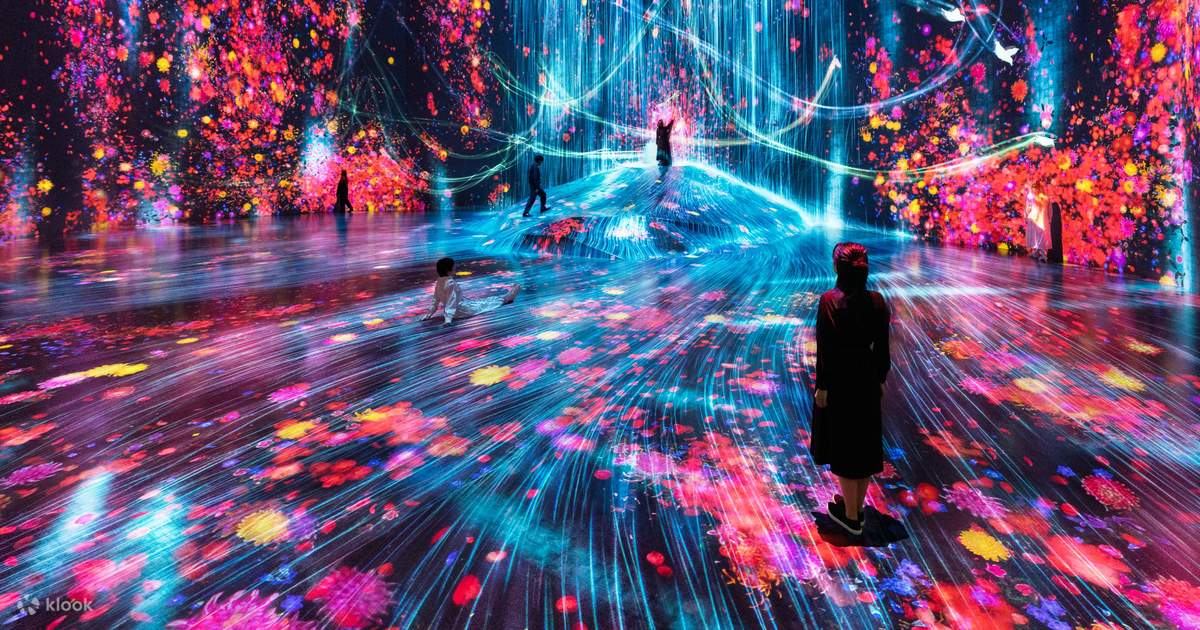Trip to Sapporo, Hokkaido, Japan in November

There really is no place in the world like Japan - we're excited for you, you're about to have the trip of a life time!
Welcome to our Japan Travel Guide! We know firsthand how intense planning a trip to Japan can be - we often felt like we were drowning in click-bait and that's the last thing we want that for you.
Contents
There is a table of contents button within the app/site to jump to any section you'd like to read, because this guide is enormous and packed with content! In short, we'll be covering the following:
⦿ Before You Go
Seasons and Timings • Arrival Documentation • Travel Insurance • Luggage and Packing • Luggage Forwarding Services
⦿ While You're There
Transport • Money • Phone and Internet • Cultural Etiquette • Basic Phrases • Booking in Advance • Accommodation
⦿ Tokyo Tips
Accommodation • See and Do • Eat and Drink
⦿ Kyoto Tips
Accommodation • See and Do • Eat and Drink • Arashiyama (West Kyoto)
⦿ Osaka Tips
Accommodation • See and Do • Eat and Drink
⦿ Bonus: Nara Day-Trip
See and Do • Eat and Drink
Seasons and Timings
No doubt you've thought to yourself "when's the best time to visit?" and honestly, there's no right or wrong answer here because there are highlights for every time of the year. It really just depends on your preferences and what you want to see and experience while you're there.
Current Weather:
Our usual advice for avoiding the crowds is to go during a shoulder season and to steer clear of public or school holidays, but you should still expect crowds everywhere you go in the major cities — Japan is extremely popular and crowded, but orderly.
Our first visit was in November to experience autumn/fall and it was absolutely beautiful. Not too hot, not too cold, barely any rain and the colours of the leaves were out of this world.. The later into November you get the more festive it starts to feel before the full on Christmas rush.
It's important to set your expectations before you go, just know that no matter how early you wake up in the morning, it's unlikely you're going to be the only person at popular attractions. Everyone has the same idea, so there's no point in ruining every sleep-in and feeling like you need a holiday after your holiday.
Pick which restaurants or attractions are at the top of your list and show up as early as possible, often you'll put your name down and be given a time to return, then just go with the flow for the rest of your trip and enjoy!
⦿ Spring: March – May
The weather is mild and not too humid, with temperatures ranging from 10°C to 20°C (50°F to 68°F) Spring is famous for Sakura (cherry blossoms) so it's usually very busy.
⦿ Summer: June – August
Prepare to sweat! Summer is hot and humid in the big cities, with temperatures often exceeding 30°C (86°F) in July and August. It's a great time of year to visit the mountains and beaches. Note that rainy season lasts from the beginning of June to mid July.
⦿ Autumn: September – November
The weather is mild and crisp, mornings and evenings can be cooler but afternoons are sunny and warm. Autumn temperatures range from 10°C to 20°C (50°F to 68°F). The key to comfortable autumn travel is layers. This is a stunning time of year to get outdoors and appreciate the colours.
⦿ Winter: December – February
Winter is cold (obviously) with temperatures often dropping below freezing in the north. Think clear days and heavy snowfall, especially in Hokkaido and the Japanese Alps. Winter is the perfect time to visit for winter sports, onsen bathing and slurping on hot ramen!
Arrival Documentation
Japan requires a few documents to be completed before visiting - and as always, it's important to know what requirements you have for visiting a new country depending on your passport.
Obviously be sure to check the validity of your passport (expiry date!) book your onward travel, ensure you have the funds and fill out any of the necessary paperwork online to make your entry as seamless as possible. Here's what you need to know:
⦿ Visas
Whether you need a visa to visit Japan depends on your nationality, the purpose of your visit, and the duration of your stay. Currently, Japan has visa-exemption agreements with 71 countries which means you can enter for up to 90 days without a visa:
⦿ Arrival Procedures: Customs & Immigration
To save time, the Government of Japan recommends that all arriving passengers submit declarations electronically before entering the country. It's super easy to do online and you can even register for tax free shopping at the same time. Note: you will need your passport and flight information to complete this.
Once you've filled out your details you'll be emailed a QR code for immigration and customs that you scan on your arrival. If you don't complete this in advance you'll be filtered off into a different line (which is much longer), so it's best to have it done and printed/take a screenshot in case you don't have internet when you land.
⦿ Arrival Procedures: Tax Free Shopping
Did you know that Japan has tax free shopping? It's amazing to save 10%, but you do need to be prepared.
Once you have the "LANDING PERMISSION" seal affixed to your passport after entering Japan (see image below) you can register for tax free shopping meaning you will save 10% consumption tax (VAT). Do this via the same link above after you have landed in Japan.
Once you've successfully uploaded your landing permission, you will be sent a QR code that allows you to shop tax-free in certain stores. Although you will have a code, it's important to still keep your passport with you at all times, as some stores often require you to show it. (Note: It's also a requirement to have your passport on you as ID if stopped by the police.)
To qualify for tax-free shopping, there are different minimum purchase thresholds depending on what you're buying. The most common amount we saw was ¥5,000 or more in a single store on the same day. In some stores you will be required to go to a certain floor to pay for your tax-free goods. It's important to keep items unopened, consumables may be placed in a sealed bag and must remain in the original packaging until you leave Japan. So keep this in mind if you're purchasing snacks you want to try while in the country and pay for them separately - the staff are often really nice about this and ask 'do you want to eat these' - they know you love snacks.
Note: There may be changes to the way tax free shopping works later in 2025. Japan is looking to switch from immediate tax exemption to a refund system where consumers pay consumption tax upfront and receive a refund on departure. We will update you as changes develop.
Money
Japan uses the Japanese Yen (¥) - banknotes are available in 1,000, 2,000, 5,000, and 10,000 yen denominations and coins come in denominations of 1, 5, 10, 50, 100, and 500.
Cash is commonly used but card is widely accepted and is always our personal preference, best to have a combination of both for places like food markets that will be cash only.
⦿ Cash
It's inevitable you'll end up with a lot of coins, so we recommend bringing a little pouch to put them in so you have a lucky dip situation in your bag. If you find yourself with way too many coins and want to exchange them for bills you can do this at convenience stores that have contactless payment systems. When making a purchase, dump your coins into the machine and it will refund you the difference in bills and coins. Tip - you don't have to count your coins if you pay this way, just put a whole bunch in the machine and it will do the counting for you... phew.
Usually, we take our home currency with us in cash so we can exchange for local dollars when we're there but this isn't necessary in Japan - which is lucky because most of the exchange places we passed didn't accept New Zealand dollars. USD, AUD, CAD, EUR and GBP were the 5 main currencies you can swap.
⦿ WISE Card
We recommend getting a WISE card when you travel, we've used this all around the world and love it for various reasons. It's a multi-currency card that lets you spend with zero transaction fees, because you transfer from your home country into JPY and send in Yen while you're in the country, and therefore has no ATM fees up to a certain value.
Save a huge amount on transaction fees when you get a WISE card and pay in Yen by clicking the link below.
We noticed that PayWave / Tap Payment wasn't always an option, even if card payment was, so make sure you carry your physical card on you and don't rely solely on ApplePay or a digital card only.
The easiest place to withdraw money is from an ATM machine in convenience stores eg. 7-Eleven. They are literally everywhere, you won't struggle to find one.
Phone and Internet
So many people recommend those portable wifi devices that you have to pick up and return to specific locations and it makes no sense. They're a logistical nightmare and you have to keep them charged and turned on to get any connection... odd.
⦿ Get An eSIM
An eSIM is a digital SIM card that allows you to activate a second mobile network on your phone, it's just a digital SIM card that is downloaded. They give you more flexibility, you don't have to remove your home SIM card, pricing is competitive and it means you'll be connected as soon as you land without having to visit a store.
To be fair - they can be fiddly to set up if you're not too tech savvy, connection sometimes isn't as strong as a local SIM and you have to check if your phone is compatible.
We love them though and sourced a discount for you too — use the code DANEANDSTACEY for 10% off a Sim Local eSIM:
⦿ Public Wifi
Wifi is super common in the big cities and we found the connectivity and speeds to be amazing at all the hotels we stayed at. The only place we struggled with a good wifi connection was on the Shinkansen (Bullet Train) between Tokyo and Kyoto, but we had our eSIMs so it wasn't a problem.
Cultural Etiquette
This section is really important, please don't skim past this and assume you're a polite and thoughtful traveller so these don't apply to you!
The minute you land in Japan you'll notice how incredibly polite the people are and how well society just seems to flow, it really is a beautiful thing. That's because of Japans unique cultural etiquette that revolves around core values like respect, harmony and consideration for others. As visitors, we think It's important to do what you can to respect the culture and tradition of the place you're visiting, so here's a few things to keep in mind:
⦿ Things To Know:
- Keep quiet in public - don't shout or yell unnecessarily, use your inside voice everywhere
- Avoid eating and drinking while walking, it's considered rude
- Don't hand cash over directly - place it in the small tray that's usually on the bench by the cashier
- Don't count your change in front of the cashier - it shows distrust
- When shopping, some stores ask you to take your shoes off before stepping in to the changing room. Women are asked to use supplied head coverings so they don't get makeup on the clothing.
- It's an offence to cross the road on a red pedestrian light, be patient and wait
- Some pedestrian crossings have vertical dotted lines that slowly decrease until it's time to cross
- Not all pedestrian crossings have buttons
- Don't play with chopsticks
- Sticking chopsticks upright in rice is reserved for funerals
- Don't rub your chopsticks together
- Don't pass food directly from one person’s chopsticks to another
- It's impolite to point with chopsticks
- Slurping food is encouraged and a sign of enjoyment
- Littering is highly frowned upon - use rubbish bins in convenience stores
- Don't be late - being on time is a sign of respect
- Respect 'no photo' signs
- Use designated places for smoking in public
- If you're sick it's polite and respectful to wear a mask
- Queues are everywhere in Japan, never push in, join at the back and follow the flow
- Try to avoid blowing your nose loudly in public
The most important theme throughout is to think about other people first, before yourself, and be considerate. The beautiful thing about this is how most tourists will also follow these etiquettes, so despite the hecticness everything flows and seamlessly just... works. It's unlike anything you've ever seen and a joy to be a part of!
⦿ Removing Your Shoes
It's customary in Japan to remove your shoes in a few different situations. As a general rule, if you're entering a home or a more traditional/formal setting you should always remove your shoes to show respect. If you're staying at a modern western-style hotel you will be supplied with slippers in your room but you won't have to remove them before entering the hotel itself.
Places you'll likely need to remove your shoes:
– Public Bathhouses (Onsen)
– Traditional Japanese restaurants with Tatami mats
– Traditional Accommodation (Ryokan)
– Temples and Shrines
⦿ Tipping
Tipping isn't really a thing in Japan and can actually make locals feel a little confused or awkward. In some cases it might even be considered rude - Japanese culture places a strong emphasis on hospitality, and good service is considered part of the experience. Japanese people take huge pride in doing their job well without expecting additional gratuity.
A better way to show your appreciation is to learn how to say how you feel in Japanese, whether it's a quick 'thank you' or 'that was delicious'.
As with everything, there may be rare circumstances where tipping is appreciated, like when travelling with a private guide or at a high-end establishment, but it really does depend on the context.
Basic Phrases
Hello / Good afternoon - Konnichiwa
Good morning - Ohayō gozaimasu
Good evening - Konbanwa
Goodbye - Sayonara
Thank you - Arigatou
Thank you (polite) - Arigatou gozaimasu
Excuse me / I’m sorry - Sumimasen
Please (requesting) - Onegaishimasu
Please (informal) - Kudasai
Yes - Hai
No - Iie
Nice to meet you - Hajimemashite
Said before eating (similar to “Bon appétit”) - Itadakimasu
Travel Insurance
It's important to make sure you have travel insurance no matter where you travel, for obvious reasons, it pays to have insurance for peace of mind.
Our recommendation for great pricing and realistic coverage is below:
Luggage and Packing
Try not to get swept up in the misinformation online about luggage in Japan. The key is to pack light, we'll help you find a way to make it work and confirm what you need to consider.
The biggest consideration is the size of hotel rooms, they're notoriously tiny, so floor space is limited and you very rarely will be able to fully unpack unless you book 5-star accommodation.
Main luggage: We travel with 1 medium and 1 large Away suitcase, both open flat and are hard shell. We made it work, but never were able to have both open at the same time.
Carry on: We travel with 2 medium sized backpacks and there's often places for these to sit or rest.
⦿ Suitcase Tips:
If you plan on experiencing the bullet train - known as the Shinkansen - it's important to know the specific requirements for that, more further below on that because it influences the following tips:
– Bring a suitcase that's 160cm or smaller (sum of height x length x width)
– Don't exceed 250cm (sum of height x length x width)
– Try to avoid bags weighing more than 30kg
– Make sure you can comfortably carry your bag up and down stairs
– (Or you're travelling with someone who can)
– Bring a day pack if you're planning on using luggage forwarding
– Use packing cubes so you can unpack then store your suitcases away
⦿ Packing Tips:
– Small overnight bag or backpack:
We would often take a backpack to explore during the day that had an insulated drink bottle, our passports, a little ziplock bag for rubbish (there are very few trash cans in public) and all the other usual essentials. It's also a good idea to have a backpack if you plan to use a luggage forwarding service so you can keep all your valuables with you while your suitcase makes the journey.
– Portable Phone Charger:
– Medications:
We encourage you to do your own research when it comes to bringing certain medications to Japan. Some of the prohibited over the counter meds may surprise you, like a Vicks Inhaler! OTC medications that contain pseudoephedrine (like Sudafed) are prohibited. Products where the codeine content exceeds a specific limit (in certain cough syrups and painkillers) are also banned. Tip – don't forget to pack your prescription meds in your hand luggage in case your bag goes missing.
– Small Hand Towel:
There's often no way to dry your hands in public toilets. You'll see locals using their own cute little hand towels to dry their hands. If you don't have anything you can bring, these are easy to find at places like Daiso when you're there.
– Reusable Shopping Bag:
Bring a reusable shopping bag that packs down easily and you can just throw in your backpack when you're not using it. Some retail shops don't offer bags and if you get an awkward sealed tax-free bag with no handles, you might want something to put it in.
– Toiletries:
A lot of hotels provide a good selection of toiletries and pyjamas - more on this in the accommodation section below. For the girls, I'd recommend bringing your own deodorant and sanitary products. Thick pocket tissues were also hard to come by (maybe because it's frowned upon to blow your nose in public?) the only ones we could find were paper thin so come prepared. If you're fussy when it comes to toothpaste, we'd recommend bringing yours from home too.
– Hand Sanitiser:
Of course, this is something you can easily get in Japan, but we liked having it with us given how frequently we took public transport and had to hang on to the communal handle thingys.
- International Driving Permit
If you're planning to rent a car or do some street go-karting, you will need a physical IDP (under the Geneva Convention 1949), your drivers license from home and your passport. Some countries require official Japanese translation by an authorised organisation. Make sure you check thoroughly that your country’s driving license/IDP is eligible for Japan before booking anything. The most helpful website we found regarding IDP rules was Klook, click the link below and scroll to the bottom of the page.
- Stamp Collecting Notebook
If you love a little memento, then you will love collecting Eki stamps. These unique rubber stamps are available at train stations, tourist attractions, temples, and museums across Japan. This is not something we thought we'd get behind, but it was actually so fun. Again, this is something you can buy in Japan (we loved 'Traveller's Factory' for their little notebooks) but if you want to save some cash, just bring one from home.
- Umbrellas
Don't bother packing an umbrella unless you've got a snazzy travel one. Clear umbrellas are not only super aesthetic but readily available at convenience stores for a reasonable price. Hotels often have umbrellas you can borrow as well.
- Decent Socks
There will be times you may need to remove your shoes (more on this below) but it's worth having some decent socks that actually match and don't have holes in them for these occasions.
- Passport wallet
Because you have to keep your passport on you at all times, it's worth having something you can put it in to protect it from getting messed up in your bag. We just got a cheap little pouch, places like MUJI, Daiso and Standard Products are great for things like this.
Luggage Forwarding Services
The train stations in Japan can be enormous, with lots of stairs and hundreds of exits. If you don't want to carry your luggage with you on public transport, you can have it delivered directly to your destination using a luggage forwarding service - this can also be used to send your bags between airports, hotels and different cities.
Here's how it works:
1) Pick a Company - Then drop off your luggage at an airport service counter, convenience store or hotel reception (not all hotels offer this service).
2) Details - You'll be given a form to fill out all your details including the address of the hotel you want your luggage to be delivered to, staff will be able to help with this. Once you've filled out the paperwork, pay the shipping fees and leave your luggage.
3) Transport - Your luggage will be transported securely to the specified destination, usually arriving the next day, but if you drop it early enough it might be available the same day. This is why it's important to have a day pack with you containing valuables and everything you might need overnight.
4) Pick-Up - Collect your luggage at the destination. This will either be at your hotel, convenience store or designated drop off point.
There are multiple companies that offer this service including LuggAgent (via Klook) and JAL/ABC, but arguably the most popular company is called Yamato Transport - you'll see their yellow logo of a cat holding a kitten everywhere you go. Find out more by clicking the link below.
Transport
⦿ Digital Suica Card (IC Card)
A digital Suica Card is an absolute must-have for Japan and if you've got an iPhone it's even more valuable. It's essentially a rechargeable prepaid transport card that can be used in various cities (including Tokyo, Kyoto & Osaka) as well as purchases at convenience stores, vending machines and other selected retailers.
Wherever you see "IC" (integrated circuit) on the ticket gates, you can scan your Suica card the same way you would for any typical contactless payment around the world.
Digital Suica Cards:
- Are only available for Apple users with an iPhone 8 or newer
- Go to your Wallet App on your phone, tap the + and select 'Transit Card'
- Search for 'Suica' and continue
- Once in your Apple Wallet tap 'Add Money' to load JPY
- We recommend connecting your WISE card and to pay in Yen
- When using card, just tap your phone on the ticket gate, you don't have to physically open your Apple wallet and select your SUICA card
If you're an Android user your only option is a physical card unfortunately. These can be purchased from train stations (or sent to you in advance) but most require a refundable deposit and initial deposit of around 1500 yen - this is not the case for digital cards.
Other than Suica, other popular digital cards include PASMO and Icoca, both of which can be added to your Apple Wallet through the same process listed above. We just went with Suica as there seemed to be the most information about it and it worked with our WISE cards. Note, some credit cards issued outside of Japan cannot be used to top up your card.
⦿ Unlimited Options
Alternatively there are options to have unlimited public transport for a few days at a time, or even up to 21 days!
As an example, a 1, 2 or 3-day pass for Tokyo is extremely cheap on Klook. Note, you will see Klook mentioned often for Japan - they dominate activities, transport and bookings in the country and are a wealth of knowledge - so we sourced a 10% discount code for your bookings: DSKLOOK
Or get the classic JR Pass to have freedom to roam for up to 21 days!
⦿ Airport Transport (Tokyo Narita International)
It's highly likely you'll be flying into Tokyo, which has two major international airports: Narita (NRT) and Haneda (HND). Haneda is located much closer to central Tokyo and only takes around 20 minutes to get into the city centre via the Monorail or Keikyu Line. Whereas Narita is a lot further away and has a bunch of different options to get in to the city.
Our Experience From Narita:
– Narita Airport inter-terminal bus
- Keisei Skyliner: From Narita Airport to Nippori Station (40min)
- JR (Yamanote Line): Nippori Station to Shinjuku Station (20min)
We decided to take the Keisei Skyliner because it was a good price, didn't take too long and only had one transfer with a short walk to our hotel. Depending on where you land at Narita, you may have to take an inter-terminal bus (we did when we flew Jetstar, but didn’t when we flew Air New Zealand) - then we just followed the signs for the Keisei Skyliner.
Once at the ticket counter we were able to pay with a physical card, which was great as we didn’t have any cash yet. The Keisei Skyliner stops at both Nippori and Ueno so we used Google Maps to figure out what station had the best connection to get us close to our hotel. On this occasion we were able to pay for the Keisei Skyliner and metro ticket at the same time. We were handed two tickets, one for the Skyliner and one for the JR Yamanote Line train to Shinjuku.
Proof that Japan is living in 2050 - you actually put both tickets (shown in the photo below) on top of each other and into the ticket gate at the same time. If you’re not able to buy both tickets at the same time, just use your Suica card for the next train after you get off the Skyliner.
The Keisei Skyliner is a high-speed express train with plenty of space for luggage (at no extra cost), reserved seating and 3 services running each hour and costs around ¥2,600.
Note: If you plan to take the Keisei Skyliner from Ueno to the airport before your depature, leave yourself plenty of time as the trains can sometimes sell out during peak travel times. As of January 2025, the Keisei Skyliner has introduced facial recognition gates for airport-bound lines to help reduce congestion. For more details, scroll to the ‘About Face Check in Go (Facial recognition)’ at the bottom of the page linked below.
We'll cover these more shortly, but there are a couple of other options that you might prefer, but they will take longer and/or be much more expensive:
- Narita Express
- Limousine Bus: Great option if your accommodation is near a drop point
- Book a transfer via Klook
⦿ Trains (Metro / Subway / JR / Private)
The best way to get around Tokyo is by train, they're well-organised and super efficient. The railway network consists of:
- JR Lines
- Private Railway Lines: Odakyu, Tobu, Keisei
- Tokyo Metro Lines
- Toei Subway Lines
For tourists, the Yamanote (JR line) is the most commonly used line and takes you to a lot of the major hubs including Shinjuku, Harajuku, Shibuya and Akihabara.
Train Tips:
It's also important to pay attention to the entry/exit point that Google Maps recommends because the stations are so large. If you enter or exit at the wrong point you could add a lot more walking to your route than you anticipated.
Shinjuku Station in particular is the busiest station in the world, with 200 entry/exit points and an estimated 4 million people passing through it daily, so if you struggle with crowds try to take public transport outside of peak hours around standard 9-5pm work timings.
Train Etiquette:
- Keep to the left on escalators in train stations (right in Osaka)
- Respect queues, don't cut in or push
- Let others off the train before you step on
- Don't take phone calls on the train
- Don't speak loudly, whispers only if you do need to talk
- Wear your backpack on your front during peak times
- Don't block doorways where possible
- Take note of priority seating
- Eating is generally frowned upon unless you are on long-distance train
- If the train is crowded you simply need to start motioning towards the doors, no need to announce 'this is my stop' or 'excuse me', the crowd will move to help you out
⦿ Shinkansen (Bullet Train)
The Shinkansen (or Bullet Train) is the 6th fastest train in the world, it reaches a top speed of 320 km/h (199 mph) making it a super fast and convenient way to travel. The Shinkansen JR network is made up of nine different lines that take you all over Japan, the most popular being between Tokyo, Kyoto and Osaka.
Again, the Japan Rail (JR) Pass might be a good option if you plan to explore a lot:
If you just want to experience the Bullet Train once or twice, it's most cost effective to buy individual tickets via Klook or at a station rather than the JR pass. The type of ticket you get depends on your budget, destination and size of your luggage.
Shinkansen Luggage
In reference to our very specific note on luggage volume above — adding the width, height, and depth of your suitcase together calculates the overall dimensions and it's important to know this for the Shinkansen.
Luggage pieces 160cm or less (sum of height x length x width) can be brought on the Shinkansen without prior reservation and stored overhead or in front of you.
For luggage pieces between 161cm – 250cm, a prior seat reservation is required. Travellers need to make a seat reservation before boarding in the last row of seats on the train, or book a seat that includes the oversized luggage area.
Luggage over 250cm cannot be brought on the train, and will need alternative transportation. If this is the case, you will need to use a luggage forwarding service like Yamato Transport mentioned above.
Note: There are planned changes for Shinkansen luggage rules in 2025. We will update you when more information becomes available.
Shinkansen Green Car vs Ordinary Car
Next, you'll need to decide whether to purchase an ordinary car ticket (second class) or green car ticket (first class), of course having a little more luxury comes at a cost. We booked the green car via Klook from Tokyo to Kyoto (Nozomi) in November 2024 and it cost us $435nzd + $56nzd booking fee for 2 people one-way.
Ordinary Car:
- Cheaper
- Five seats per row, two on one side, three on the other
- Reclining seats, slightly less than the green car
- Free wifi
- Foldable table
- Both reserved and non-reserved cars available
- No footrests
- Some lines have reading lights
- More passengers, less room for luggage, louder
Green Car:
- Four seats per row, two on each side
- Larger seats, more leg room, larger recline (up to a 40° angle)
- Free wifi (although it didn't work for us)
- Dedicated power plugs at each seat
- Complimentary moist hand towel
- Adjustable LED reading light
- Some lines include treats or tea/coffee
- Foldable table
- Every seat on the Green Car requires a reservation
- Larger windows
- Smaller passenger capacity, quieter
- Multi-angle footrest
Pro tip - Booking through Klook is super easy and convenient and you might be able to save 10% using DSKLOOK code. They allow you to book your seat preference, whether it's window, aisle, oversized luggage or even if you want a Mt Fuji view. The tickets are electronic QR codes which means you can just scan your phone through the gate. Some ticket services require you to go and pick up physical tickets at the station.
⦿ Buses
⦿ Walking
Prepare to walk a lot, especially in Tokyo because it's such a vast city and there are so many different areas to explore. On average we'd walk around 15,000 steps per day, so pack a comfortable pair of shoes or leave room in your suitcase to buy a new pair!
Tip - Don't open taxi doors, the driver will hit a button that will automatically open the door for you.
Booking in Advance
A word of warning - if you're the kind of person who likes to just go with the flow and book activities and restaurants as you go, you might struggle in Japan. Tourism has boomed and it's one of the busiest places we've ever been, which means booking in advance is an absolute must or you risk missing out. Keep in mind that that everyone is battling for the 'best' time slots (like the coveted sunset slot at Shibuya Sky) so these are always the most crowded time to visit. Although it's easy to get swept up in wanting to book everything at the perfect time, just remember that what the internet says is best might not be your version of 'the best'.
If you've seen a restaurant or cafe on social media, we hate so say it, but prepare to wait in line unless you can get a reservation in advance. This isn't something we really like, but it's just the way things work in Japan.
Tip: Don't just use Google reviews to research restaurants, instead use the site/app called Tabelog - Japan's number one restaurant listing and reservation site. That way you'll get a mixture of local and tourist reviews.
⦿ Book at least a month in advance:
- Shibuya Sky
- All TeamLabs
- Theme Parks: Universal & Disney (more than a month in advance)
- GoKarting
- Mt Fuji Day Trip
- Shinkansen
- Popular Restaurants
- Accommodation
Accommodation
Japan has a huge range of different accommodation options to suit every traveller and budget, but the prices on the low end are definitely higher than other locations in Asia. If you're working with a modest budget, or just prefer to spend your money on experiences rather than accommodation, we recommend booking one or two subway stations away from major hubs. The closer you get to popular neighbourhoods, the more expensive the accommodation generally is, and with the efficiency of the trains everything is very well connected.
Japan is very big on the term 'eco-cleaning' - essentially a very limited, partial clean of hotel rooms. Each day they will remove rubbish and replace things like your towels, pyjamas and toiletries, but some hotels may just place these essentials outside of our door and expect you to drop of towels and rubbish in a particular location. For longer stays, a full room service with sheet change can usually be expected every three days.
Some regions in Japan charge Accommodation Tax (including Tokyo, Osaka and Kyoto) it's excluded from the room rate and will generally be charged at check-in or check-out. The amount depends on the city and how much the room rate is, the more expensive the hotel, the more expensive the tax is.
Generally, most hotel bathrooms already have the essentials like toilet paper, body wash & shampoo/conditioner, but it's up to you to pick up any additional toiletries in the hotel reception or near the lifts before you head to your room. This includes things like shower caps, razors, tooth brushes, toothpaste, hair ties, hair brushes and sometimes even cleanser, toner and moisturiser. In our experience, the more expensive the hotel, the better the quality of supplied toiletries.
⦿ Tokyo
Tokyo has it all, whether you're into culture, shopping, food or just soaking up the energy, this city has something for everyone. There are so many neighbourhoods in Tokyo that it's impossible to see it all, especially if you've only got a few days. We recommend picking one area per day (eg. Shinjuku one day, Shibuya the next) to maximise your time. There are still so many places we want to explore in Tokyo but if it's your first time, the recommendations below are a good place to start.
Click each of the links below for more information and you can even .
Tokyo: Accommodation
Throughout the following sections we'll discuss the pros and cons for each hotel we stayed at in Tokyo, Kyoto and Osaka - so open them each to see our opinions. Perhaps more importantly, we picked these hotels because of their location, so you can use these as an indicator of a good neighbourhood to look into.
Where To Stay
This is heavily debated online and every source we spoke with had a different opinion, while every potential traveler we asked said they were confused and panicked. We can confirm: this really does not matter as much as the internet will have you believe, because as above, Tokyo (and the other cities in this guide) are so well connected and vast.
Almost anywhere you pick in Tokyo will have a convenience store or 4 close by, a few little local food places and likely some shops too. They're all connected! See the list of neighbourhoods below, pick the one you like the most and get as close to the main train station as your budget will allow - or go a few stops along to save money.
Neighbourhoods
The most popular neighbourhoods are below and we recommend you visit all of them on day trips at least! Depending on when you're reading this guide, you'll see in our YouTube videos that we spent a day in each - but just note: they might not all be live just yet.
Shinjuku
A bustling hub with endless dining, nightlife, and shopping. Really good transport links make it a great base for exploring Tokyo and Shinjuku Gyoen is a nice escape from the craziness. Perfect for first-timers but can feel crowded and noisy
Shibuya
Known for Shibuya Crossing, trendy shops, and nightlife. A hotspot for young, energetic traveler's and there's nearby parks too, like Yoyogi Park. Exciting and busy, great to get into the hustle of the city!
Ginza
Tokyo’s luxury district because of the high-end shopping, fine dining, and Kabuki theatre. A big highlight of Ginza is The Tsukiji Outer Market - so. much. good. food! More on this below.
Asakusa
Rich in tradition, home to the stunning Senso-ji Temple and quaint streets with local shops. Definitely feels more relaxed and charming with a slower pace - we felt as though it was just a lot more authentic feeling (a nice change).
Room Types
For context, we mostly stayed in 'semi-double' rooms that were between 12-18m2. So you could say the size of the beds and rooms was a slight con everywhere we stayed. Space is limited in the large cities so the bigger the room, the more expensive it will be. We could usually open one suitcase fully and the other we'd just unpack then store the case away. A positive for all of the hotels we stayed at was the lovely staff, level of cleanliness, great complimentary toiletries, amazing high-tech toilets and perfect temperature controlled showers with good pressure.
Check out the link below for the best pricing and variety in Tokyo:
Hopefully our insight on where we picked will guide you also. We stayed at 2 different hotels, both were in the Shinjuku area, although they felt completely different. Click the links below to read more on the pros and cons of each hotel.

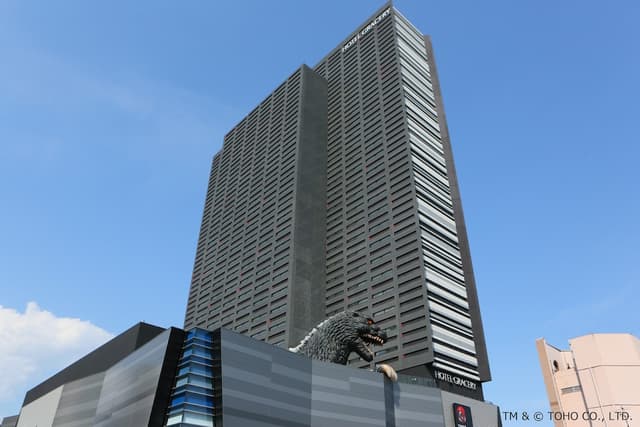
Tokyo: See + Do
Things To Do:
Tokyo is definitely the main hub for things to do - it's vast and the variety is unbelievable! To get a feel for some of the best options you should check out the top rated things to do in Tokyo here:
As we mentioned earlier, Klook is the go to for booking your experiences in Japan and we've got our top recommendations below. Use the code DSKLOOK for up to 10% off:
Things To See:
These are some of the best things to see and explore in Tokyo, be sure to open the links for more information, our honest thoughts, locations, timings and more.
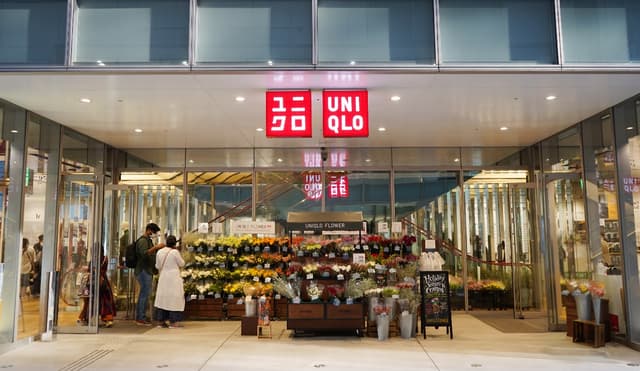

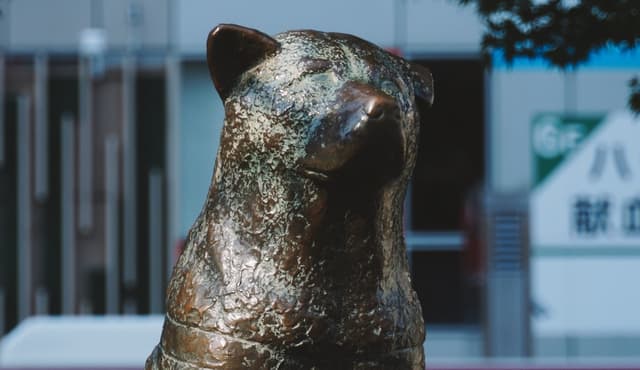
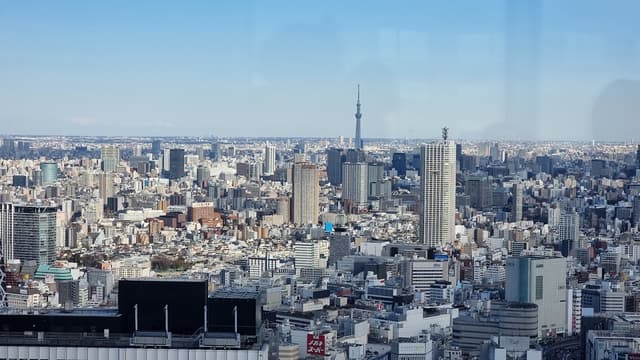
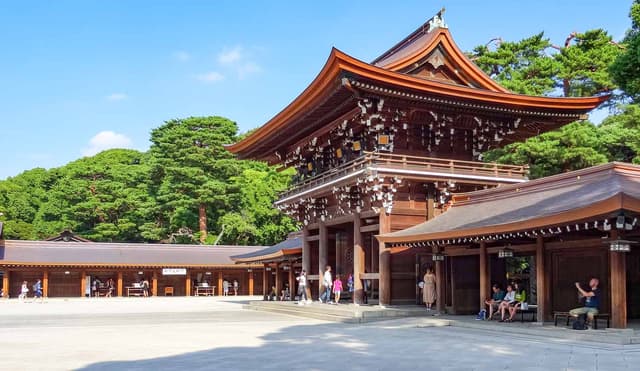
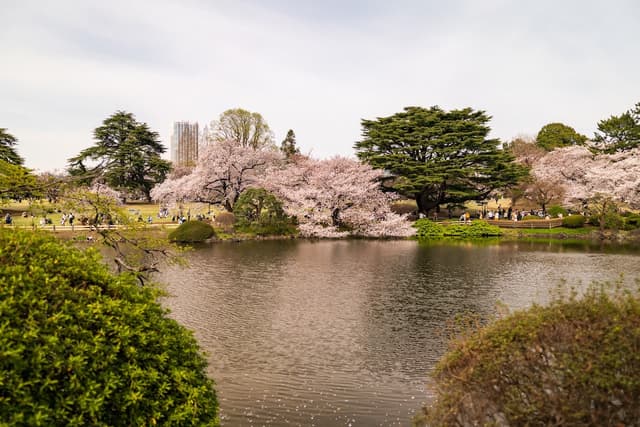
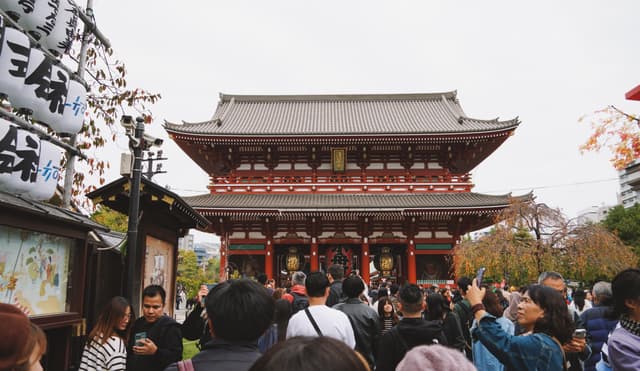
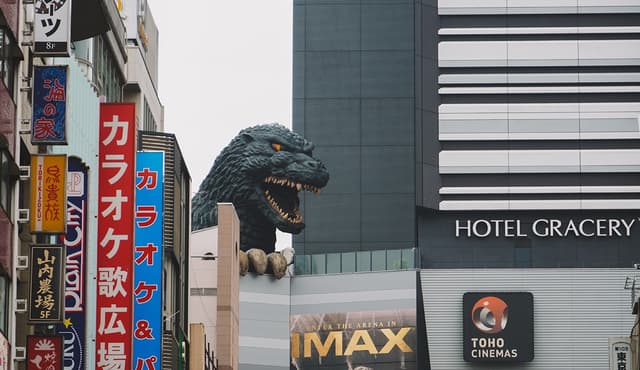
Tokyo: Eat + Drink
Is food the biggest highlight of Japan? We're tempted to say yes! While prices can escalate pretty quickly for some meals, you've probably already heard how amazing and cheap the Japanese convenience stores are! 7-Eleven, Lawsons and Family Mart are on just about every single street so you'll never struggle to find a quick pick me up.
Here's a couple of things we really enjoyed from convenience stores:
- Egg Salad Sando
- Lawsons Fried Chicken
- Ohayo Creme Brulee Ice Cream
- 7-Eleven DIY Smoothies
- Choco Monaka Jumbo Ice Cream
- Tuna Mayo Onigiri
- Egg & Soy Sauce Onigiri
- Mochifuwa Pancakes (microwave if you can, otherwise it's kinda dry)
Where To Eat:
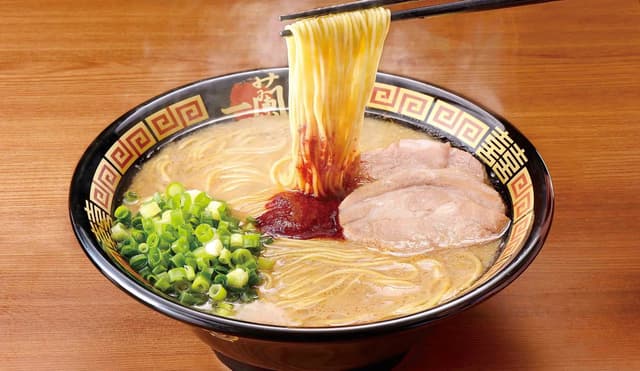
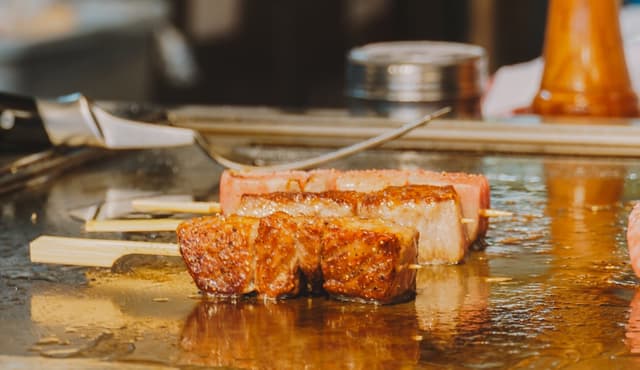
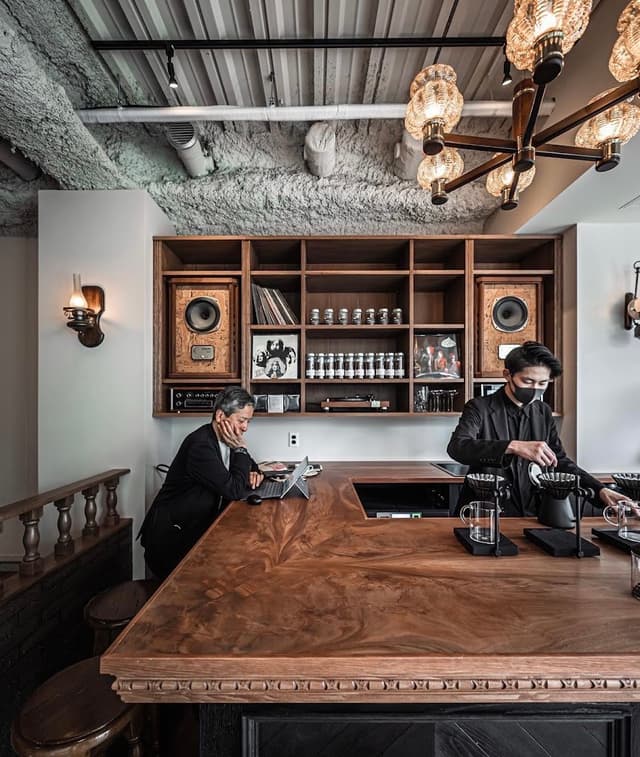
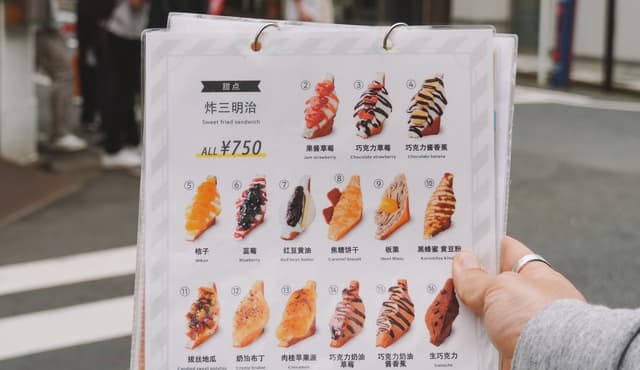
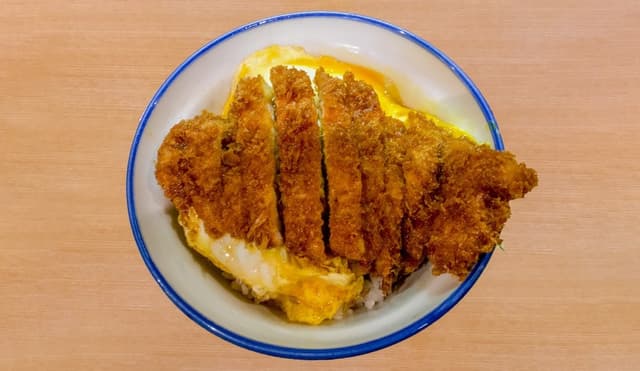

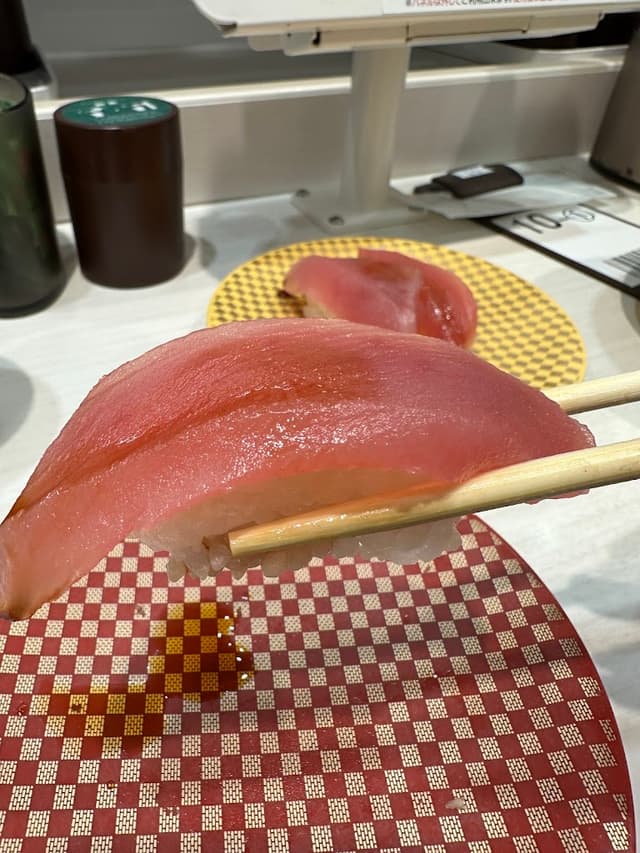
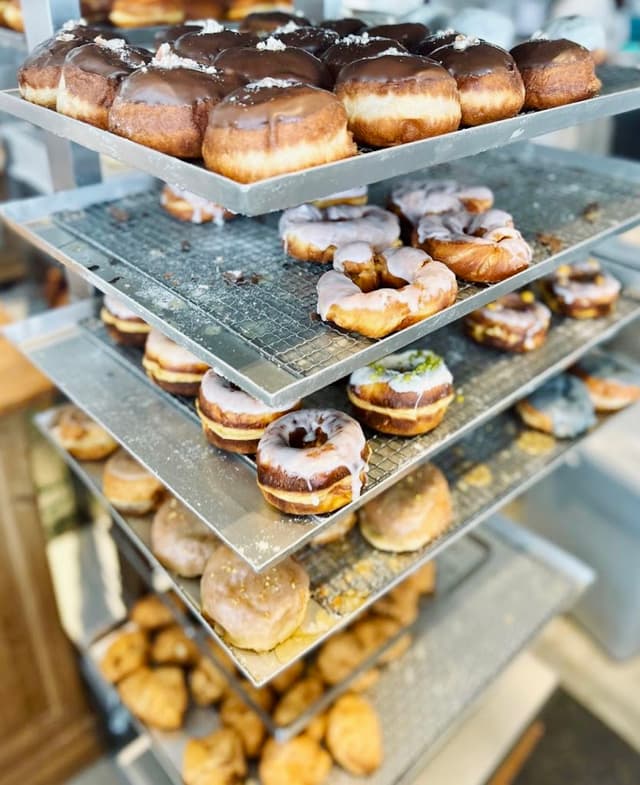
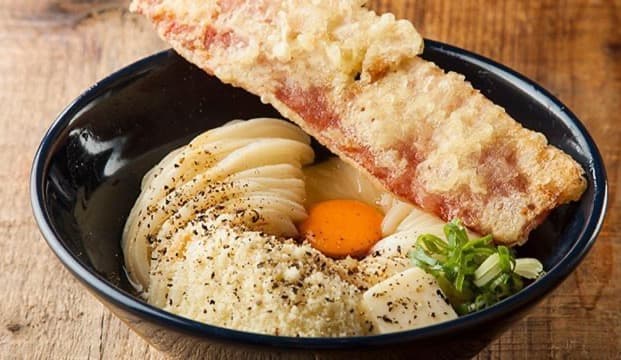
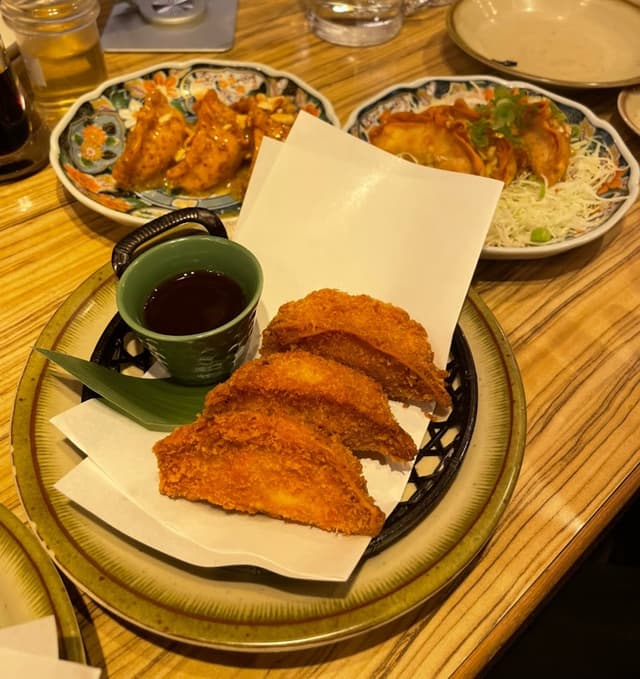
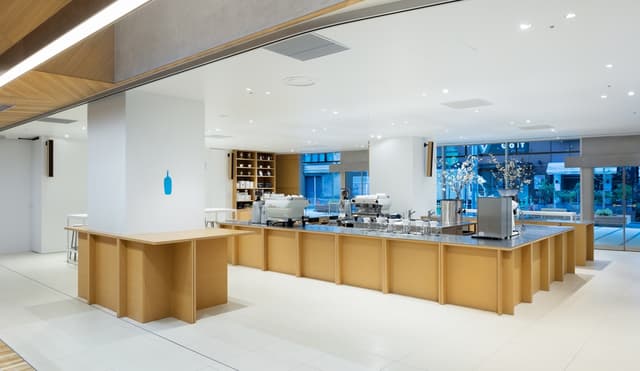
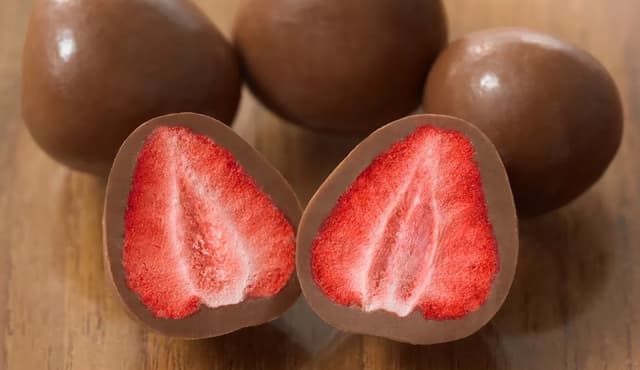
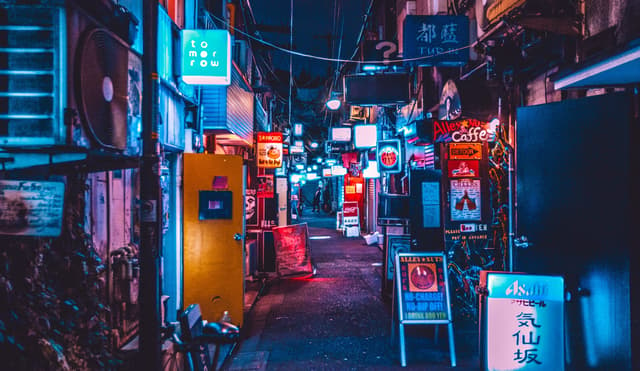
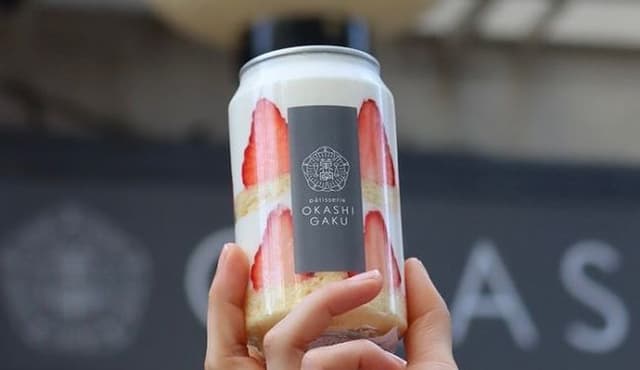
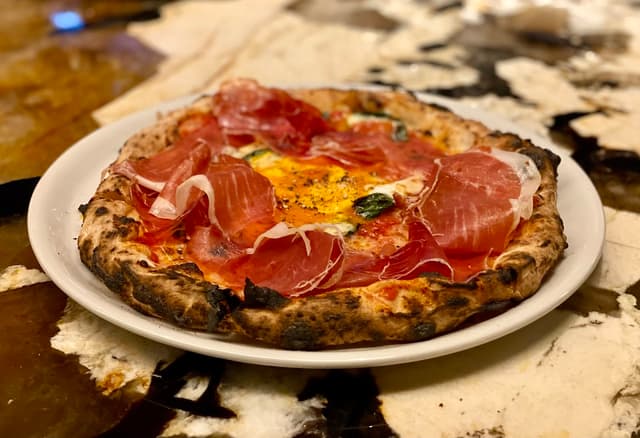
⦿ Kyoto
Kyoto takes just over 2 hours to reach by bullet train from Tokyo. It's one of the oldest cities in Japan and full of UNESCO world heritage sites, shrines, temples and it's where geisha culture was born. Like Tokyo, Kyoto is extremely popular with tourists but somehow it feels so much more peaceful in comparison (outside the touristy areas) - so it's arguably our favourite place.
Things just felt more relaxed and traditional, in the best way possible. We loved wandering the quiet streets in the mornings, checking out the traditional houses and stumbling upon little hole--in-the-wall cafes and bakeries.
Kyoto: Accommodation
Although they’re scattered all across Japan, It's common to stay in a Ryokan in Kyoto which is essentially a traditional Japanese inn, complete with tatami flooring, futons, onsen and kaiseki dining. This is an incredible experience we highly recommend, but after staying in multiple Ryokans during our time in Japan, here are some of the things we wish we knew beforehand.
You are expected to take your shoes off at the entrance - be mindful of where you step once your shoes have been removed. Ideally after removing each shoe, step backwards onto the raised platform behind you so your feet don’t touch the entranceway floor. Arrange your shoes neatly to face towards the door and then put on a pair of the supplied slippers. These slippers should be worn throughout the property but removed at the entrance of your room to preserve the tatami flooring inside.
Depending on the Ryokan, you may have the option to pick a Yukata (casual robe) and/or swimming clothes if there is a mixed onsen, before heading to your room - otherwise they’re generally already in your room along with instructions on how and where to wear them. In the winter you will also find a thicker, padded jacket which can be worn over your Yukata. If you arrive during the day, there will be no futon set up, it will be laid out by staff in the evening, usually while you’re at dinner or while you’re soaking in the onsen.
Ryokans also offer kaiseki dining, a traditional multi-course meal which consists of a lot of food, so make sure you don’t fill up beforehand. We’re talking up to 8 courses including soup, sashimi, grilled and fried dishes, rice, dessert and more. In the morning you’ll also get a traditional Japanese breakfast before check-out.
Obviously there's plenty of other great options and your typical hotels too, check out some of the best options here:
To get an idea on a great area we selected, here is where we stayed - click details for our pros and cons - so you can cross reference that on a map for your stay:
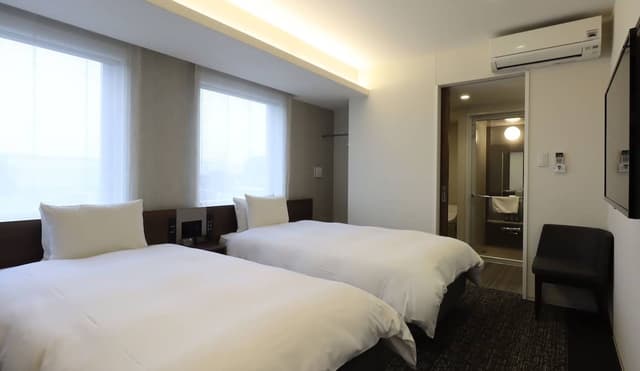
Kyoto: See + Do
Things To Do:
Kyoto definitely is more about things to see, rather than booking activities, when you compare to Tokyo. You can get a feel for the top rated activities here:
And below are a few popular Klook experiences you should look into:
Things To See:
Such a beautiful place to explore! It's amazing to have a lot more greenery, water and nature in Kyoto - it's the perfect escape from the city. See below for a list of must see's for your time here:
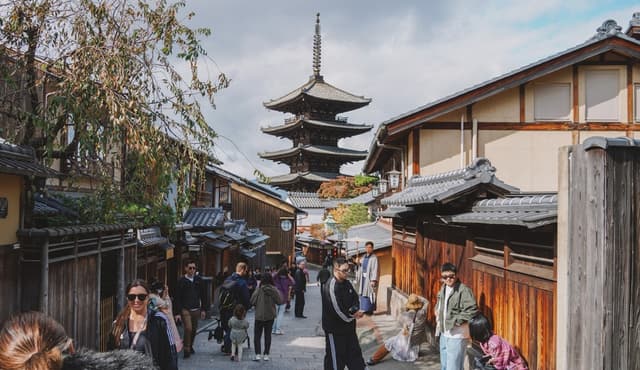
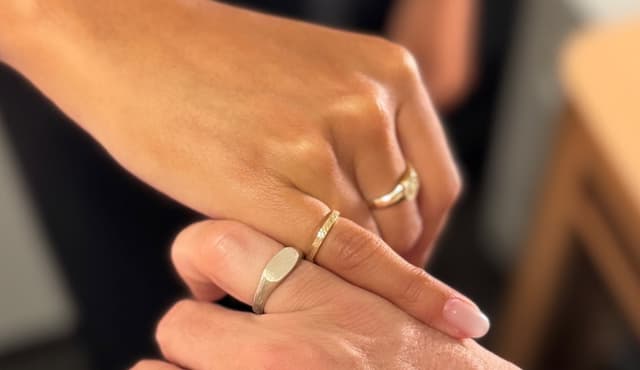
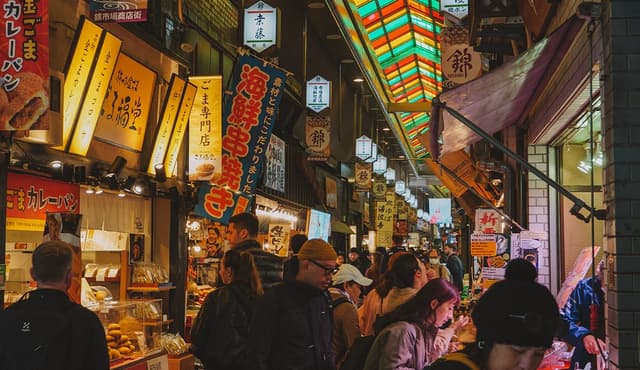

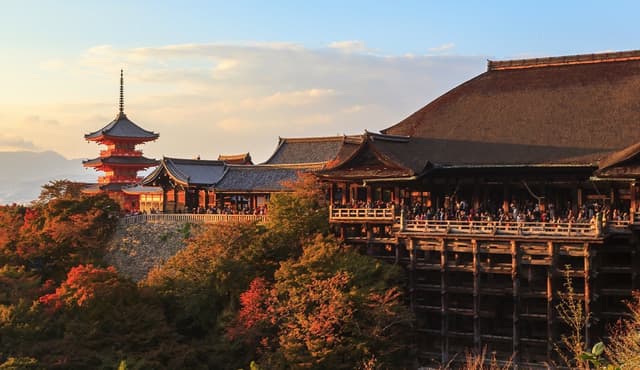
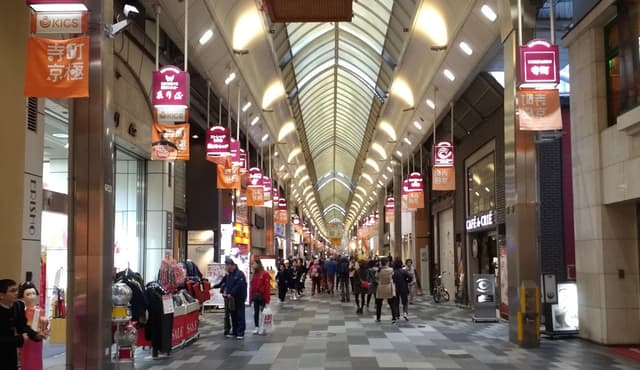
Kyoto: Eat + Drink
We had the most consistent and delicious meals in Kyoto! It's also where we found our favourite coffee in all of Japan, so read on for some top recommendations:
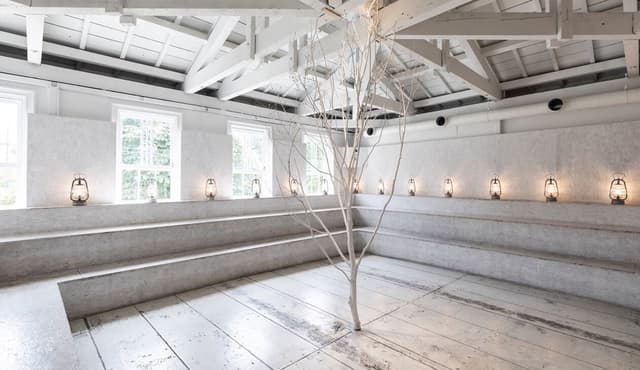
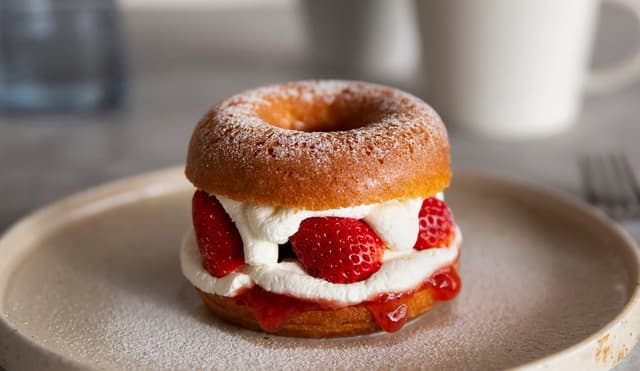
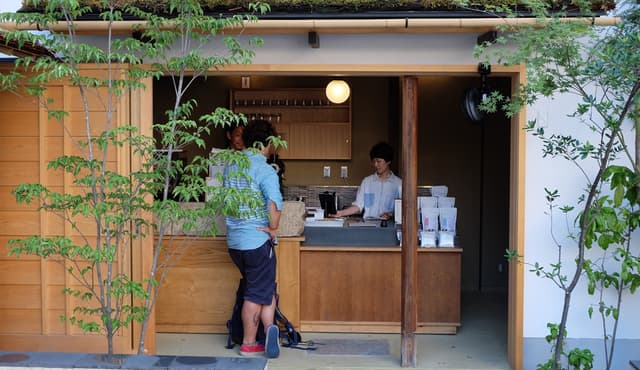
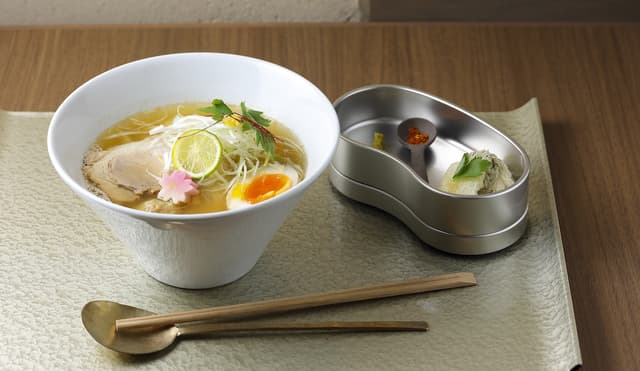
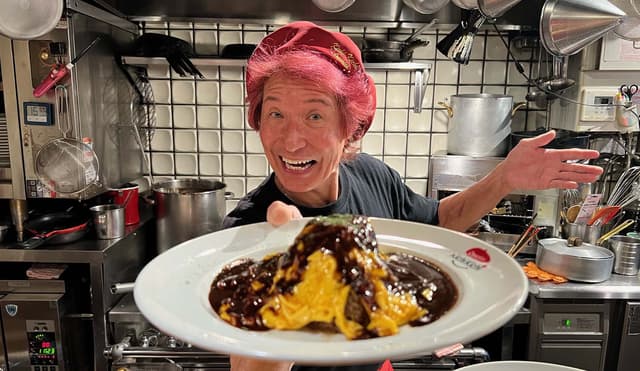
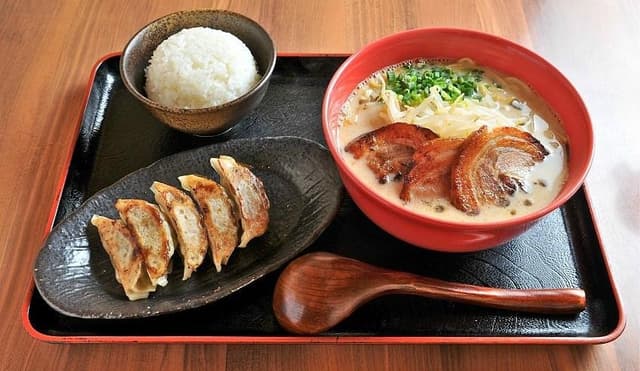
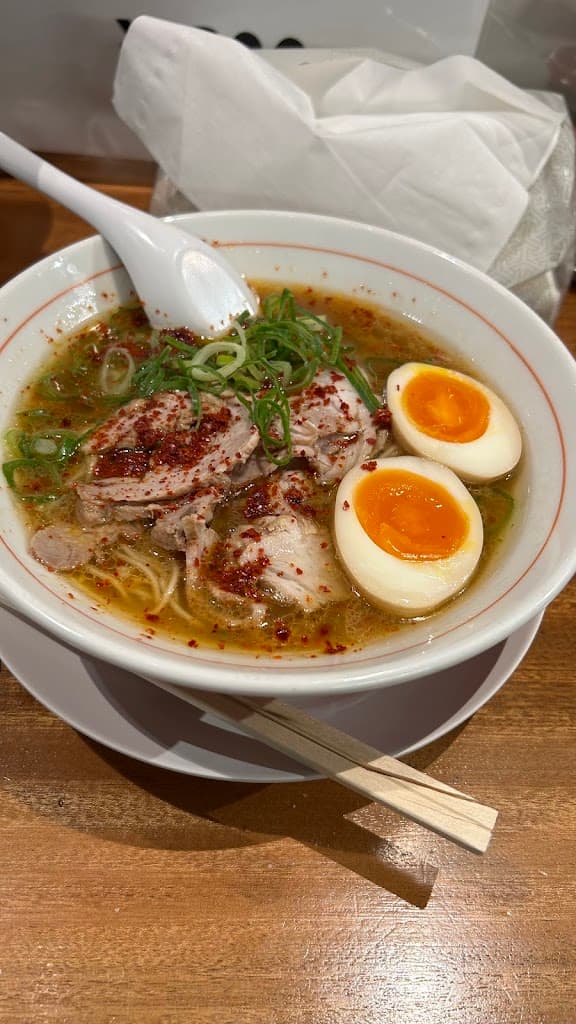
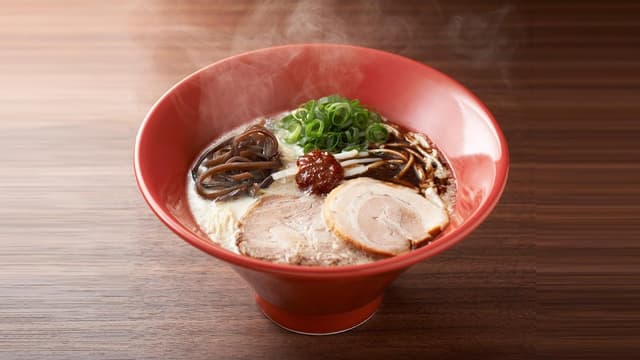
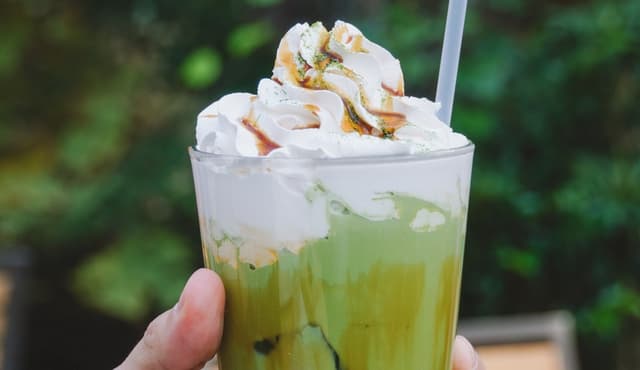
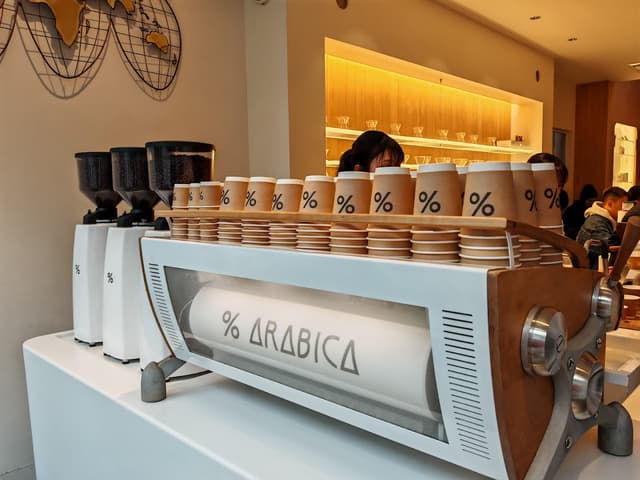
Arashiyama (West Kyoto)
We took the JR San-In Line from Kyoto Station to Saga-Arashiyama Station which took about 45 minutes. Arashiyama is a beautiful area west of Kyoto and is surrounded by mountains with a river running through the centre of town. Be prepared for the main streets and Togetsukyō Bridge to be absolutely packed with tourists - we recommend heading there early (8am is early enough, but earlier will be more peaceful) to enjoy some peace and quiet before things get hectic.
Lunch was a bit of a struggle for us in Arashiyama - we went to Arashiyama Yoshimura for their famous soba noodles. The wait time was long and the food was a little bland, which was a surprise. On a positive note, we had more fun wandering the quiet side streets, stumbling upon a little place to get a beer, grabbing some snacks and eating them in the park.
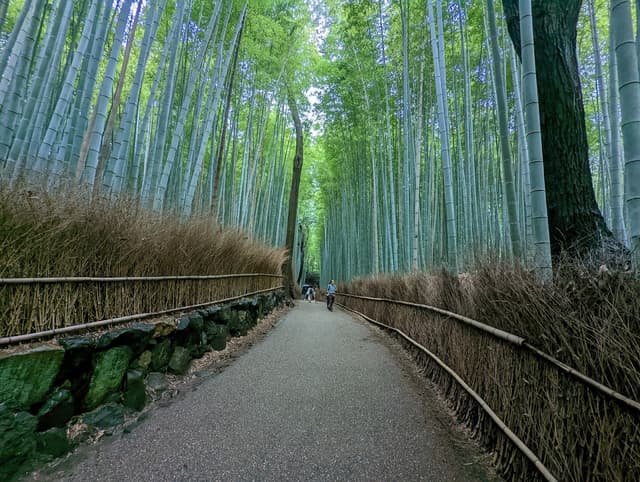
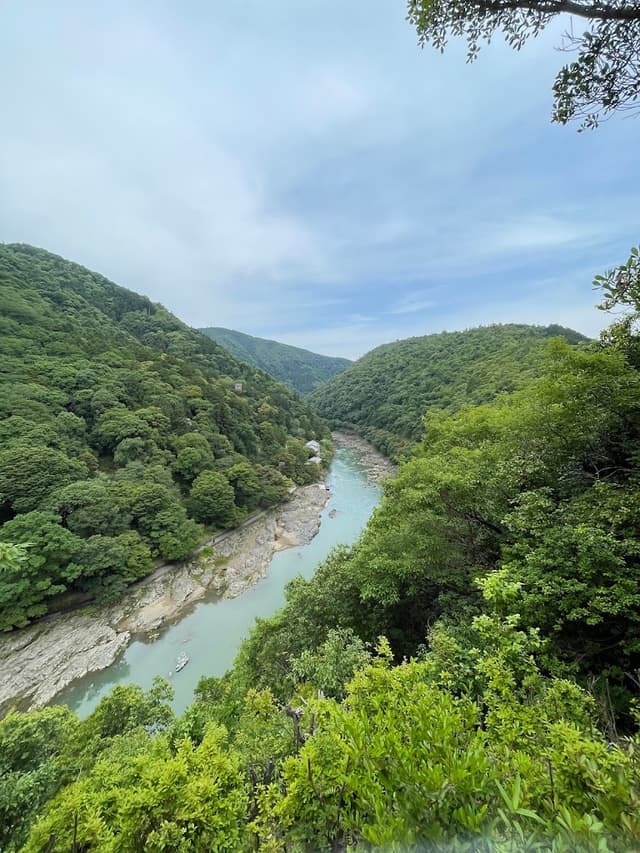


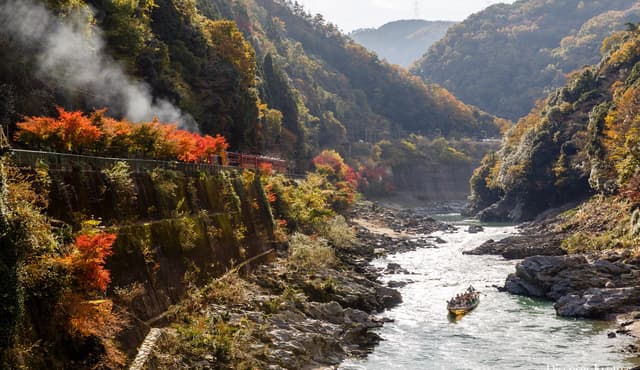
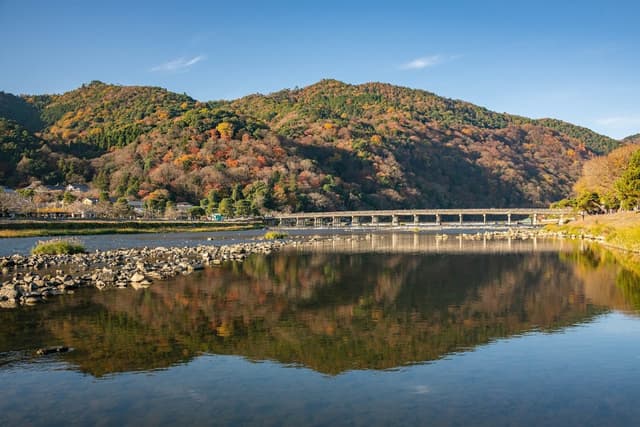
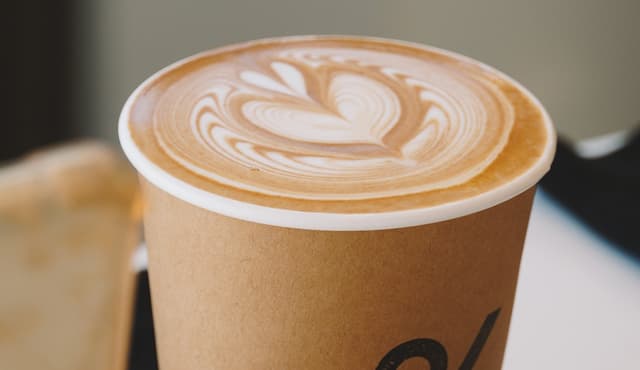
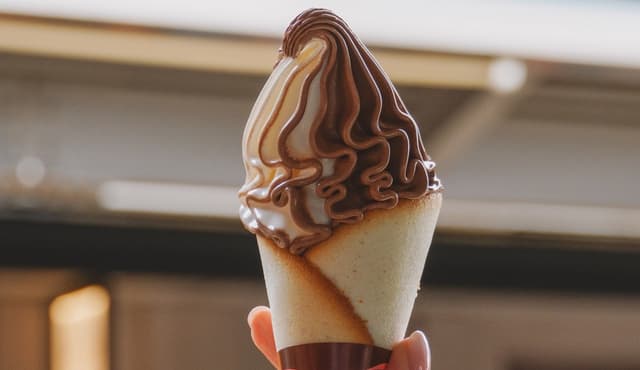
⦿ Osaka
A brief overview of Osaka:
It's Japan’s second largest city, it has a relaxed vibe, friendly locals and is famous for its food and nightlife. It's only a 15 minute journey from Kyoto by bullet train, 25 minutes by local train or an hour by car. It's known as the “nation’s kitchen” and is the place to try local delicacies like Takoyaki and Okonomiyaki. Namba and Dotonbori are the most touristy areas, packed with neon lights, street food and entertainment.
In reality, it does feel a bit like Tokyo on a smaller scale, which definitely has some benefits!
Osaka: Accommodation
As far as locations to pick, it's the same thing again with Osaka. Map out all the things to do and you'll see they're all over the place! In saying that, we do recommend you look at options around the Shinsaibashi Station.
Shinsaibashi Station is well connected to the rest of the city and around this area the shopping was amazing (both high end and super niche/cool), and you can walk to some of the main sites.
You can book your Osaka accommodation at the link here, or read up on where we stayed below:
Where we stayed in Osaka:
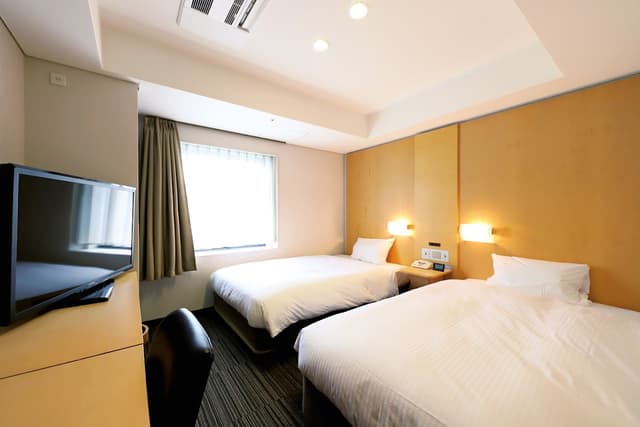
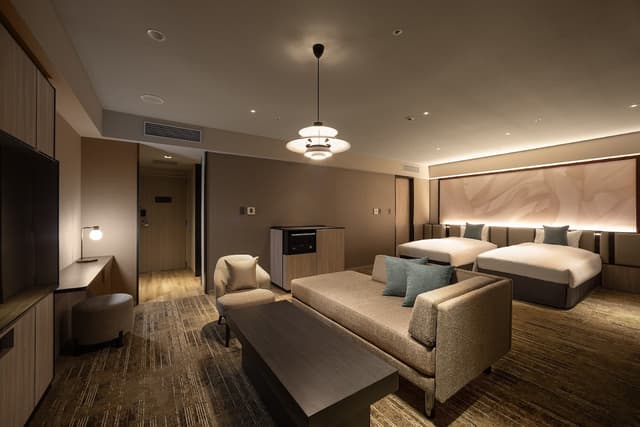
Osaka: See + Do
What To Do:
There's lots of cool things to do in Osaka! We recommend you click on the below options and see what ticks the boxes for you:
But more generally, here's the top rated list of things to do so you can pick out any others that tickle you more:
What To See:

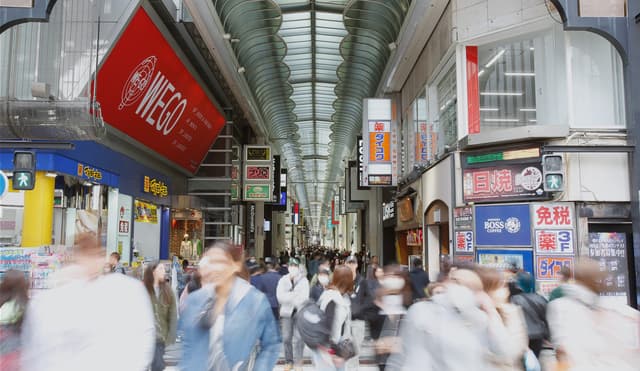
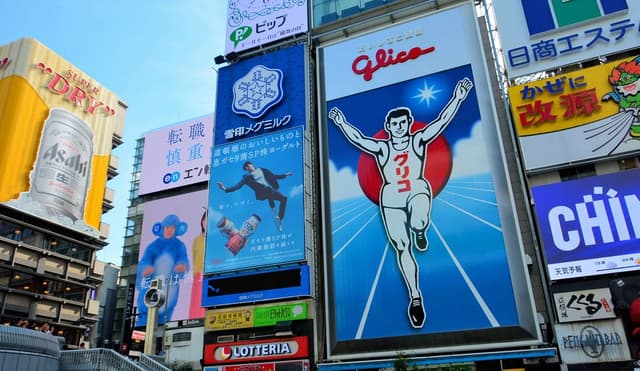
Osaka: Eat + Drink
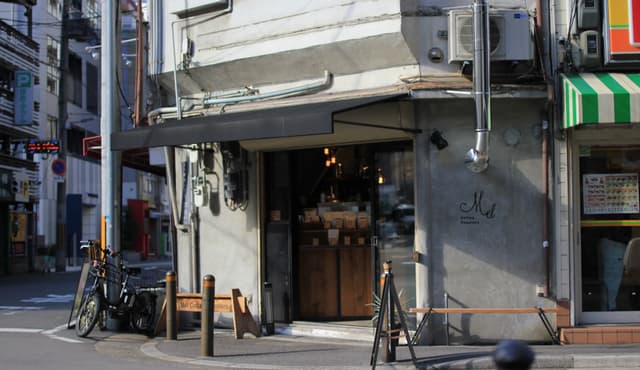
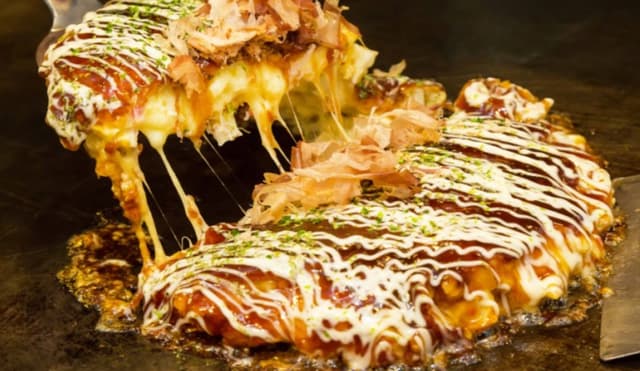
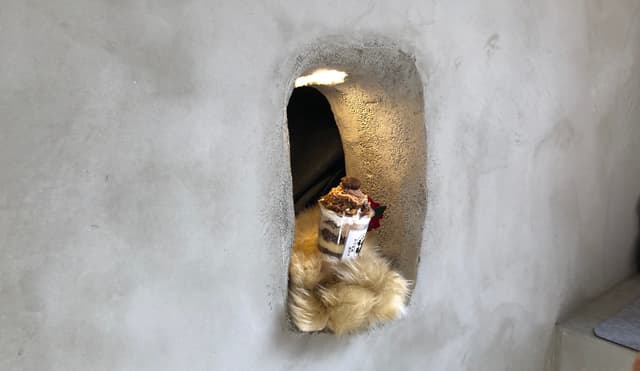
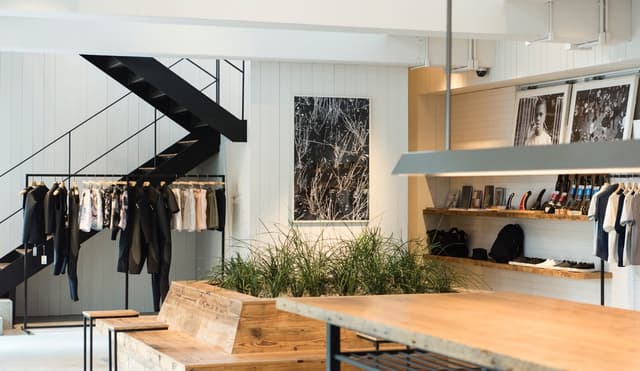
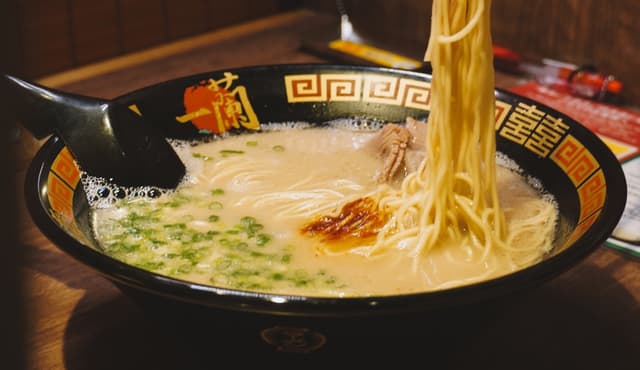
⦿ Bonus: Nara Day-Trip
We highly recommend taking a day-trip to Nara from either Osaka or Kyoto to see the beautiful and friendly deer. We just used Google Maps and planned this ourselves, jumping on the Kintetsu-Nara Line from Namba in Osaka - it took around 45 minutes.
One of the main selling points for visiting Nara is to hang out with the freely roaming sacred deer who have learnt how to bow for food. If you want to feed the deer, you can purchase some shika senbei (deer crackers) from one of many nearby stalls for 150 yen. Pro tip, hide the crackers in a bag or pocket and don't let the deer see you take them out if you're not ready to feed. If they see you've got a stack in your hands they might bully you until you're cracker-less. Once you've handed over one or two, hold up your hands to show you don't have any more.
Aside from the 1,200 deer, Nara is known for its natural beauty, culture, charming township, lots of temples, and it's also home to a handful of World Heritage sites.
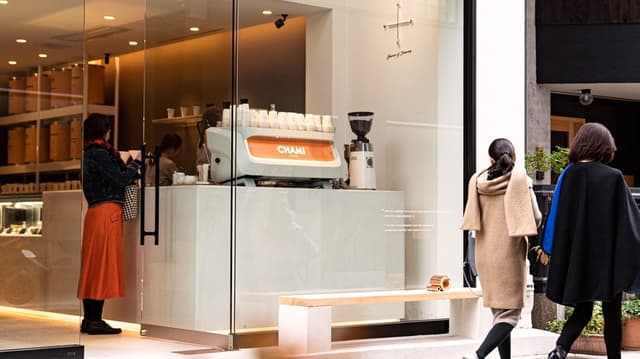
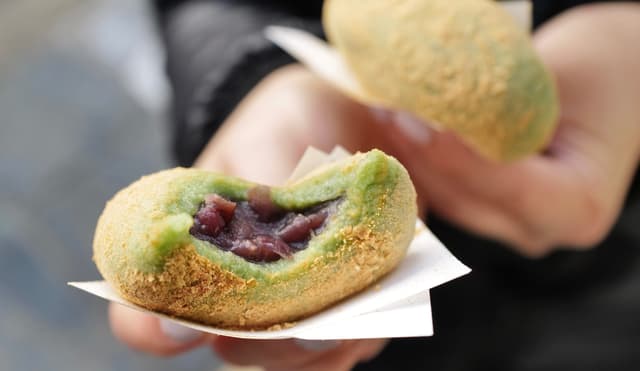
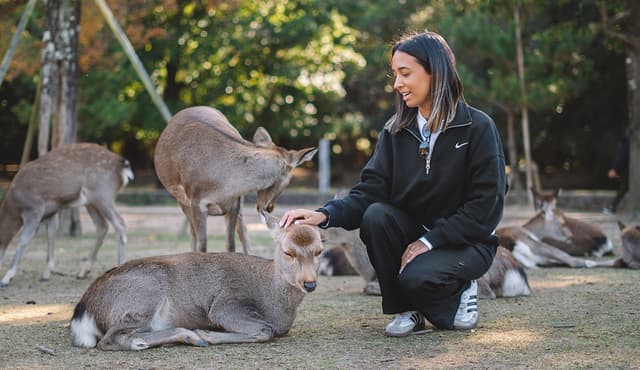
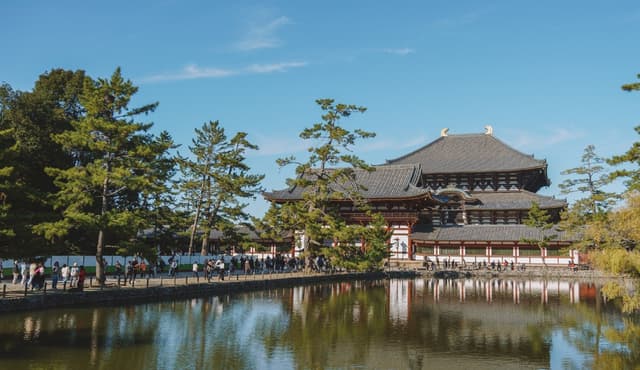

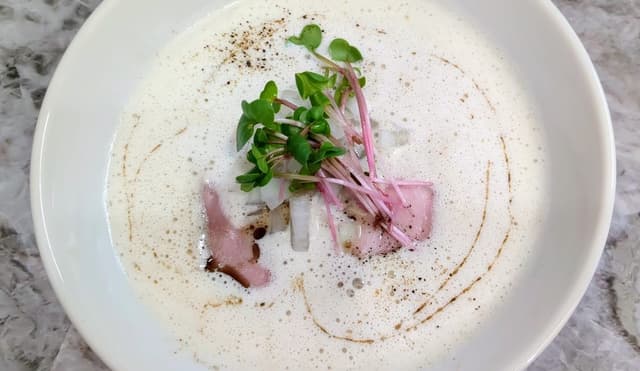
Thank You
We realise that's a LOT of information for you to consume! Hopefully this guide helps you plan an incredible first trip to Japan and you're now feeling more at ease about what's to come, because trust us, there is nowhere else in the world like Japan an it's a dream destination.
Thanks so much, travel safe, and have a bowl of ramen for us!
Dane & Stacey
The home for unique & authentic travel
